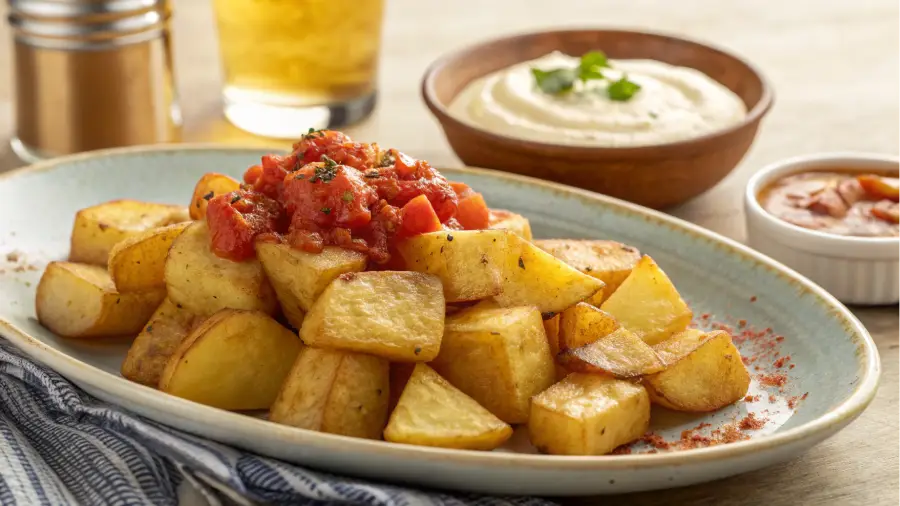Patatas Bravas
Description :
Patatas Bravas is a beloved Spanish tapa, often served as a snack or appetizer in bars and restaurants across Spain. This simple yet flavorful dish consists of crispy fried potatoes served with a tangy, spicy tomato sauce known as « salsa brava. » The potatoes are typically cut into bite-sized cubes or wedges, then deep-fried until golden and crispy on the outside, while remaining soft and fluffy on the inside. The dish is usually accompanied by a garlic-based aioli or a spicy tomato sauce that provides a perfect balance of heat and tanginess. Patatas Bravas are known for their bold flavors and are often enjoyed with a glass of sangria or a cold beer.
Ingredients:
- 4 large potatoes, peeled and cut into cubes or wedges
- Olive oil for frying
- Salt to taste
For the salsa brava:
- 1 can (14 oz) crushed tomatoes
- 2 tablespoons olive oil
- 1 small onion, finely chopped
- 2 cloves garlic, minced
- 1 teaspoon smoked paprika
- 1 teaspoon red pepper flakes (adjust to taste)
- 1 tablespoon vinegar
- Salt and pepper to taste
How to Cook:
- Heat the olive oil in a deep frying pan and fry the potato cubes until golden brown and crispy, about 8-10 minutes.
- Remove the potatoes and drain on paper towels. Season with salt.
- For the salsa brava, heat olive oil in a pan and sauté the onion and garlic until soft. Add the crushed tomatoes, paprika, red pepper flakes, and vinegar. Let it simmer for 10 minutes, seasoning with salt and pepper.
- Serve the fried potatoes with the salsa brava poured over or on the side. Optional: Add a dollop of aioli for extra flavor.
History :
Patatas Bravas is a staple of Spanish cuisine, particularly in Madrid and the northern regions. The dish has its origins in the early 20th century, where it was first served as a casual snack in tapas bars. « Bravas » refers to the « brave » or spicy nature of the sauce that accompanies the dish, though the level of spiciness can vary by region and personal preference. Over time, the dish has become a symbol of Spanish tapas culture, widely enjoyed by locals and visitors alike.





